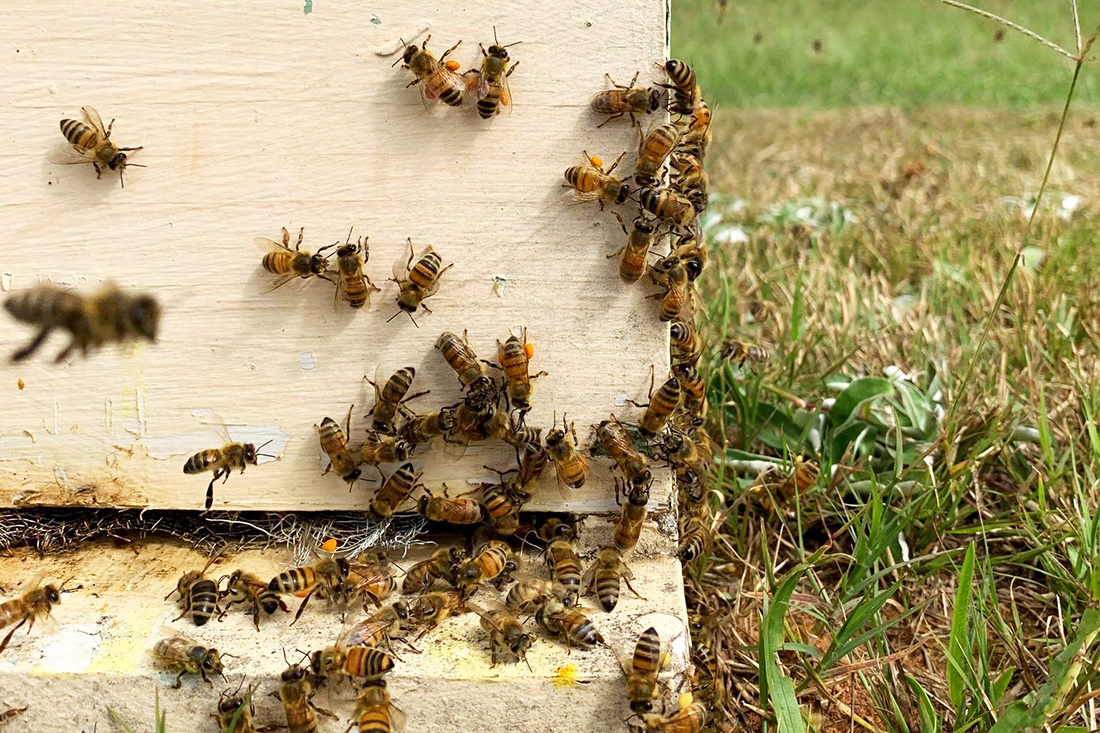By Dan Suiter
University of Georgia
This family of bees has a number of species, all with pretty much the same biology. In the next couple of weeks, we'll start seeing a series of behaviors in these bees, culminating in a mating-and-egg-laying process.
The unfortunate part of this is that it involves wood structures.
A typical piece of wood that's susceptible to infestation by carpenter bees is unfinished, soft wood, such as pine or fir. Cedar's highly susceptible.
Old-timers
The bees you'll see buzzing around wood during the next few weeks were born a year ago. They left their nest sites, dime-size holes chewed into the wood, last summer. They went out into the garden and started doing their pollinating thing as all bees do.When it got cold last fall, they returned to the same nest sites and went to sleep for the winter.
Around the first of April, the bees wake up and emerge from the wood. The bees you'll see in the next couple of weeks are the ones doing the mating and laying the eggs. These bees were born last summer and will be dead by May.
But first...
The females will chew a new hole into the wood, then make either a left or right turn and chew another section of wood, probably 6 or 8 inches long.They'll lay an egg, put some pollen on it, then back up and wall it off. Then they'll lay another egg, put some pollen in there, wall it off and repeat that with six or eight eggs. When they finish, they live for only another couple of weeks.
The bees you see in the summertime are their progeny. It's their kids in the garden during June, July, August and September.
Give 'em an inch...
These bees will return to the hole where they were born to survive next winter. They come back to the same sites year after year after year. So if you don't abate this problem, you can wind up with significant damage, especially in barns and outbuildings where you're not keeping watch.Not only do you have aesthetic damage with those dime-size holes, but you have a degradation of the structural integrity of the wood.
The bees come back year after year because they're all the same family. It's the progeny after the progeny after the progeny. So you have to break that cycle of reinfestation after reinfestation.
What to do
The University of Georgia Cooperative Extension recommends two options to kill the active bees in the spring:
- Apply an insecticide dust, such as Sevin, directly into the hole in mid to late April. Apply it when the wind isn't blowing, and wear a particle mask and gloves.
- Spray a liquid insecticide on the wood surface every two weeks at least through April and maybe into May, as long as the bees remain active. Any product that ends in "thrin," such as cypermethrin, cyfluthrin or deltamethrin, should work well. Don't spray the liquid on top of the dust or you'll negate the efficacy of the dust by getting it wet.
Patience
The only time when you don't have any bees in those wood galleries is from midsummer to early fall. That's the best time to plug up the holes. If you plug them while bees are still in there, they may actually, when they develop, chew their way out, leaving more holes.So wait until probably July or August to plug the holes with wood putty. Sand them off and then paint that surface with either an oil- or polyurethane-based paint. Something that's really thick will keep the bees from coming back.
(Dan Suiter is a Cooperative Extension entomologist with the University of Georgia College of Agricultural and Environmental Sciences.)






